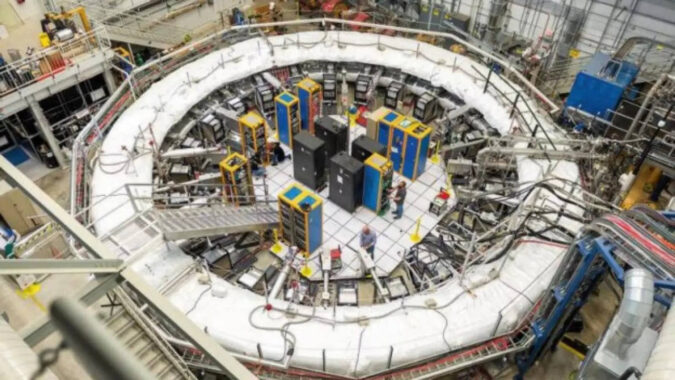The experiment studied the wobble of muons as they travelled through a magnetic field. The muon, like the electron, has a tiny internal magnet that causes it to wobble — or, technically speaking, “precess” — like the axis of a spinning top while in a magnetic field. But the wobble’s speed, as measured in the experiment, varied considerably from what was predicted based on the Standard Model of particle physics, the theory that explains how the basic building blocks of matter interact, governed by four fundamental forces in the universe. The new findings, building on data released in 2021, continue to hint at some mysterious factor at play.
“We are looking for an indication that the muon is interacting with something that we do not know about. It could be anything: new particles, new forces, new dimensions, new features of space-time, anything,” said Brendan Casey, a senior scientist at Fermilab and one of the authors of a research paper on the findings published in the journal Physical Review Letters. “I like crazy so I would love this to be something like Lorentz violation or some other new property of space-time itself. That would be insane and revolutionary,” Casey added. Casey was alluding to a principle called Lorentz invariance that holds that the laws of physics are the same everywhere. “Yes, it is fair to say that it could be pointing to unknown particles or forces,” University College London physicist and study co-author Rebecca Chislett said. “Currently due to new results in the theory community, it is difficult to say exactly what the discrepancy between the two (predicted muon behaviour and observed behaviour) is, but theorists are working hard to resolve this.”
The experiment was conducted at minus-268 degrees Celsius. The researchers shot beams of muons into a donut-shaped superconducting magnetic storage ring measuring 50 feet in diameter. As the muons zipped around the ring travelling nearly the speed of light, they interacted with other subatomic particles that, like tiny dance partners, altered their wobble. The 2021 results similarly showed an anomalous wobble. The new results were based on quadruple the amount of data, bolstering confidence in the findings. The researchers hope to announce their final findings using all of their collected data in about two years.
